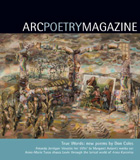by Luke Hathaway
Margaret Avison. Listening: Last Poems. Toronto: McClelland & Stewart, 2009.
Excerpt from Feature Review
“To break the iamb, that was the first heave”: so wrote Ezra Pound, famously, in his Cantos. Pound’s line—despite the pyrrhic and spondaic feet with which it (appropriately) heaves away—sticks in my mind because of those strong initial iambs. To break the iamb: how? As well break breath or heartbeat. Or stride.
In the autobiographical collage that is Margaret Avison’s I Am Here and Not Not-There (assembled after Avison’s death by Stan Dragland and Joan Eichner), Avison writes of walking: “I have worked out my own ways of walking a distance. First, venture far enough to feel a steady rhythm with your whole body, so that after the jolt of any necessary stop, as at a curb, you are easily released into the remembered pace. Sometimes, to strike the 6/8 rhythm that is most sustaining, I dream up words to repeat (‘Chlorophylled shrubbery’) so that neither side of my body feels unequally stressed. The established rhythm brings on a slight dissociation of sight and hearing, so that undirected receptors allow the world around to flow uncensored into consciousness.” The result is a kind of synaesthesia, Avison writes—which is also “the state necessary to writing a poem.”
Chlorophylled shrubbery, chlorophylled shrubbery . . . Try it. The trick is to assign to each syllable one footfall, so that the two words have their endings on alternate “feet.” For a right-foot-favouring loper like me, it’s a discipline. Do it for a block, and your quotidian march begins to feel distinctly . . . waltzlike. Your altered gait begins to alter the rhythms of your thinking.
This is not the digression it may sound like. Poetry is physical. Coleridge liked to compose while scrambling through bracken, Jonathan Bate tells us, Wordsworth (that blank-verse master) while walking unimpeded down a long, straight road. Why wouldn’t a poet looking to break the iamb—not merely to mute it, as did many of Avison’s contemporaries, or to throw it away—address herself first to her habits of motion?
I am being a touch fanciful. But the effects of Avison’s meter un-making are real. Take “Architecture,” for instance (from her last collection, Listening), a characteristically pedestrian (and I mean that in the highest sense) poem:
The white and gold of a
cold morning, with
March through the door to-
morrow’s daybreak, sets
the pulses throbbing. Oh
I know the heaviest snow-
falls have been March’s. Nine-
teen thirty-six saw single-file
foot traffic down
Yonge Street. Many who went,
set out to go, to
work, walked all they could,
wading thigh-deep at times
until, in any
coffee-shop or pub
someone had managed to open by then,
they met and talked with
whatever other venturer
chose to be stranded there.[. . .]
See how the comfortable iambs of “The white and gold” are thrown off by the stressed-syllable beginnings of lines two through four: cold, March, morrow (even the word broken here, to achieve the desired rhythmic—never separate from a semantic—effect). When Avison returns to iambs, then, in line five, we can hear them—can register the onomatopoeia: “the pulses throbbing.” See, too, how the walking iambs of “set out to go, to / work, walked all they could” bog down in spondees (“. . . could / wading thigh-deep”) until they give way to the falling rhythms of stanza’s end.
I doff my cap—no, I elevate my titfer (break the iamb)—to Avison the metricist. But Avison’s agenda, in such poems, goes beyond the prosodic to the philosophical. “Poetry is always in / unfamiliar territory,” she writes in the poem “Poetry Is,” in her 2006 collection Momentary Dark. At poem’s end, she adds: “It can happen that poetry / . . . is / the unfamiliar territory / that poetry is in.” Breaking the iamb is one way for a poet to keep that territory unfamiliar—not only for her reader but for herself. Employing irregular rhythms, she refuses to lull her reader, or herself, out of true listening.
A poet who wants to speak the truth, Avison implies, must tune her ear not to the dictates of her music, but to the given substance of the world. “[T]he sixteenth
century / poets were light on prophecy,” she writes in Momentary Dark (“Is Intense Sincere?”): “Singing does that to poets.” The trick is not to sing, then, but to listen.
Listening is the title of Avison’s final collection, and also its governing metaphor. It is worth noticing that this is a shift away from the visual metaphor so prominent in her earlier work. Think of the sonnet “Snow,” from Winter Sun (1960): “Nobody stuffs the world in at your eyes. / The optic heart must venture.” Avison’s mother became blind in her old age. Avison’s own eyesight failed to the point that Eichner, her long-time friend and amanuensis, would “type texts in bold print for . . . easy reading.”
“Poetry is not a personal statement,” Avison maintains; still, there is consonance between the failing eyesight she chronicles in her biography and the increasing emphasis on listening in her late poems. (I suspect that the soft-focus image on the cover of Listening is no accident.)
…
read the full review in the issue
 |
a Feature Review [read other reviews]
Published in Arc 64: Summer 2010 |

